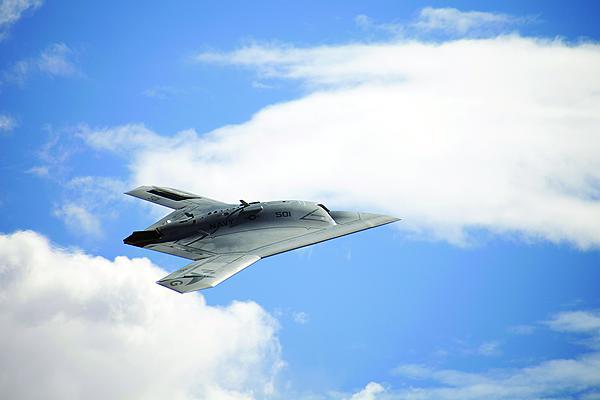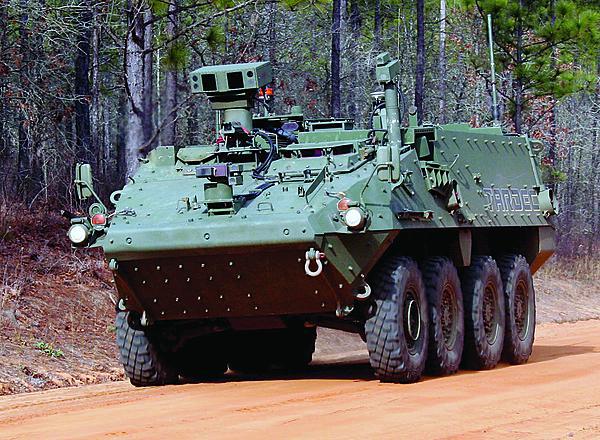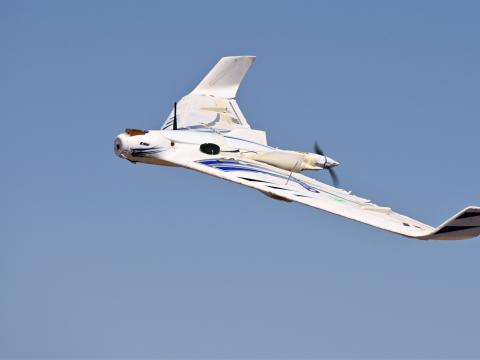Era of Change for Unmanned Systems
The next five years will be as exciting as the last decade--but in a different way.
Unmanned vehicles will undergo an array of changes in the coming years brought about by the war in Afghanistan winding down, budgets tightening and the national strategy shifting toward the Asia-Pacific region. Adjustments may include the retirement of some unmanned air systems, a stronger focus on refining existing unmanned planes rather than fielding new ones and increased research and development of land and maritime technologies.
The U.S. military will not be fielding many new unmanned aerial vehicles (UAVs) to the current war, but the situation is not all gloom and doom, says Dyke Weatherington, director, Unmanned Warfare and Intelligence, Surveillance and Reconnaissance, Strategic and Tactical Systems in the Office of the Under Secretary of Defense for Acquisition, Technology and Logistics. “The last 10 years have been very dynamic. We’ve seen rapid growth and huge increases in force structure. My guess is that the next five years will be equally dynamic in a different way. There’s huge potential for continued capability increases in ISR [intelligence, surveillance and reconnaissance] for the warfighter. I just think that’s going to look a little different than it has in the last 10 years.”
For the most part, that means the U.S. military will take capabilities it already has for UAVs and refine those as much as possible. Improvements could include fielding new capabilities to existing platforms, enhancing current payloads or reducing ownership costs, he explains.
On the other hand, the outlook for maritime and land-based unmanned vehicles may be brighter. “Many of the advantages we’ve seen in unmanned aircraft systems are going to increasingly translate to other domains. We’ve seen a lot of small robots in the fight today, but most of those are tele-operated, small kinds of things. Over the next five or six years, you’re going to see increasingly the automation of systems that either reduce crew size or eliminate crews. In five years, I think we will see Army convoys on the road with some vehicles that do not have humans in them,” Weatherington predicts. “The advantage is that with no human in the vehicle, we don’t have to up-armor the thing. That saves money so we can add capability, and it increases flexibility.”
The U.S. strategic focus on the Asia-Pacific area of operations likely will lead to advances in maritime unmanned systems, Weatherington adds. “We’re really on the cusp of the maritime unmanned systems coming into their own because the Asia-Pacific environment is more suited to the maritime domain.”
Bill Vass, chief executive officer for Liquid Robotics Incorporated, Sunnyvale, California, agrees that unmanned maritime systems will be an important part of the mission in the Asia-Pacific region. “As there is a pivot to the Pacific, movement across the Defense Department and the need for long-duration ISR marine platforms will become key to the Navy’s operational success,” Vass says. He explains that because the Pacific is the largest body of water on the planet, covering it with manned platforms is not practical from either an operational or affordability perspective. “Airborne and satellite assets are weather-limited and cannot directly measure the ocean or link to undersea activity. The only way to cover the Pacific is to have very long-duration unmanned platforms that can operate for years at sea on their own, covering tens of thousands of miles and doing autonomous and semi-autonomous missions that can be re-tasked from shore in real time,” Vass contends.
Unmanned maritime systems can perform a number of missions for warfighters in the Asia-Pacific region: providing ISR data, gathering meteorological and oceanographic data, providing navigation support, and supporting anti-submarine warfare, anti-torpedo and anti-mine operations. “They could augment manned operations as well as operating during hazardous conditions—for example, during monsoons and hurricanes,” Vass emphasizes.
He observes, however, that maritime systems cannot do it all. “Maritime robotics need to be part of a complete, end-to-end ISR system that includes unmanned airborne and satellites working with unmanned surface and undersea platforms. Together, they provide a comprehensive system that will support operations in the Pacific,” Vass states.
Liquid Robotics specializes in long-duration unmanned maritime technology. The company’s Wave Glider concept uses solar panels and ocean wave energy to travel long distances, stay in place for long periods and monitor vast areas without having to refuel (see page 38). Liquid Robotics has several research and development efforts ongoing to enhance the technology. “A successful marine platform of the future must have long duration—greater than a year—be re-taskable at any time, work autonomously for thousands of miles and be able to support multiple mission packages,” Vass says.
Vass adds, however, that warfighters are not necessarily looking for unmanned solutions. “The warfighters are not looking for robotic marine platforms. They are looking for mission solutions that expand operating capabilities, decrease the target-to-shooter time, reduce risk to the warfighter and manned platforms, increase situational awareness, reduce costs and are reliable and simple to use,” Vass says.
The focus on the Asia-Pacific area also will affect the improvements to be made to unmanned aircraft. Some platforms, for example, may have to be protected against harsher weather than they encountered in the dry desert climates of Iraq and Afghanistan. Additionally, ISR sensors that worked in the desert may not work as well in jungle environments. Foliage penetrating radar now deployed on manned aircraft in South America could be integrated onto other platforms, either manned or unmanned, for use in the Asia-Pacific region, Weatherington says.
Weatherington did not name a specific system, but Lockheed Martin announced in February that it had deployed the Tactical Reconnaissance and Counter-Concealment-Enabled Radar (TRACER) onboard the U.S. Army’s C-12 Huron aircraft to support the U.S. Southern Command’s counter-terrorism, humanitarian assistance and disaster relief operations. TRACER is a low-frequency, synthetic aperture radar capable of detecting objects that are buried, camouflaged or concealed to provide real-time, high-quality tactical ground imagery to the warfighter, according to company documentation. The radar also incorporates data link technology that allows airborne processed results to be linked immediately to portable ground stations. The penetrating detection capability on a persistent surveillance platform provides commanders at all levels with actionable intelligence.
Also, the coming years may see some airborne drones forced into retirement, Weatherington says. The military already killed funding for Northrop Grumman’s Global Hawk Block 30 variant with plans to retire the system. The House Armed Services Committee restored funding while the Senate Armed Services Committee supported the military’s decision to kill it. The issue may need to be decided in conference committee.
Some experts believe a compromise will allow funding to be restored and give the system a second life. “I think there will be a compromise reached. Air Force officials have already said they will not do anything to push the system out of the force right now. There’s just too much support on Capitol Hill for the Block 30 for it to be put in mothballs,” says Phil Finnegan, director of corporate analysis with Teal Group Corporation, a Fairfax, Virginia, consulting firm. Finnegan co-authors Teal Group’s UAV report.
Some unmanned systems were developed and fielded rapidly to meet warfighter needs, but sustaining them over the long term might not be worth the investment. Weatherington points out that sustainment makes up approximately 70 percent of a system’s life-cycle costs. “Budgets are really tight, and the services have to scrutinize their spending and determine that what they have procured is worth sustaining. Many of these systems are just now getting into the heavy sustainment phase,” he says.
Generally speaking, sustainment costs for drones are much lower than the costs for the manned systems that UAVs replaced, but in some cases that argument can be difficult to support. “I’ll pick on Shadow for a minute. There’s really no comparison for Shadow with what it replaced. It sorta kinda replaced Kiowa. It sorta replaced Black Hawk, but those weren’t one-to-one replacements. What the Army has found is that Shadow really augments or enhances those other systems. You fly a Shadow and when you’ve sensed the target, you deploy the other aircraft to complete the kill chain. Those two systems working together are much more efficient than either one by itself,” Weatherington says.
The Defense Department will not develop a lot of major new UAV platforms in the near future, but the Navy’s Unmanned Carrier Launched Airborne Surveillance and Strike (UCLASS) system is one exception, Weatherington points out. UCLASS is intended to extend the reach of the Navy’s carrier fleet. Northrop Grumman Corporation, Falls Church, Virginia, was awarded a prime contract in 2007 to provide a UCLASS demonstration model based on the company’s X-47B aircraft, which completed its first flight in summer 2012. During the flight, the aircraft communicated with a shore-based version of the aircraft carrier systems that will help guide the X-47B to precision landings on the carrier deck. In 2013, program officials plan to demonstrate the ability of the X-47B to operate safely from a Navy aircraft carrier, including launch, recovery and air traffic control operations. Those trials will be followed by a demonstration of autonomous aerial refueling in 2014. Other companies have made it clear they will compete for the contract, including The Boeing Corporation, Chicago, Lockheed Martin Corporation, Bethesda, Maryland, and General Atomics, San Diego.
Finnegan says Northrop Grumman has become the company to beat on the UCLASS contract and notes that whoever wins will be well-poised for future business. Adm. Gary Roughead, USN, chief of Naval Operations, told a Brookings Institution audience in May that the service remains committed to deploying UCLASS by 2018.
Finnegan predicts that micro UAVs will continue to be an area of active development for military and law enforcement missions. Additionally, hydrogen-powered UAVs such as Boeing’s Phantom Eye and Aerovironment’s Global Observer could cut the cost of persistent surveillance and could prove useful in the Asia-Pacific area, Finnegan says.
So far, Weatherington says, the military has proved it rapidly can provide unmanned systems to meet warfighter needs, and he does not see that changing in the coming years. “The greatest success we’ve had is the rapid increase in force structure in unmanned systems and the absolutely phenomenal success they have provided the combatant commanders. In the current fight, unmanned systems, whether they be airborne systems or ground systems, are absolutely essential to the warfighter. He can’t fight the fight he’s fighting without those systems,” Weatherington says. “We procured stuff rapidly; we put it in the fight rapidly; and it did exactly what the warfighter expected. Most of our unmanned systems are delivering on time and on-budget. Predator, Reaper, Gray Eagle, Shadow and the whole host of small systems have delivered ahead of schedule and have delivered more capability than promised.
Weatherington concludes that, “The most important attribute is that, when we lost one of those unmanned aircraft, nobody had to write a [sympathy] letter home.”






Comments